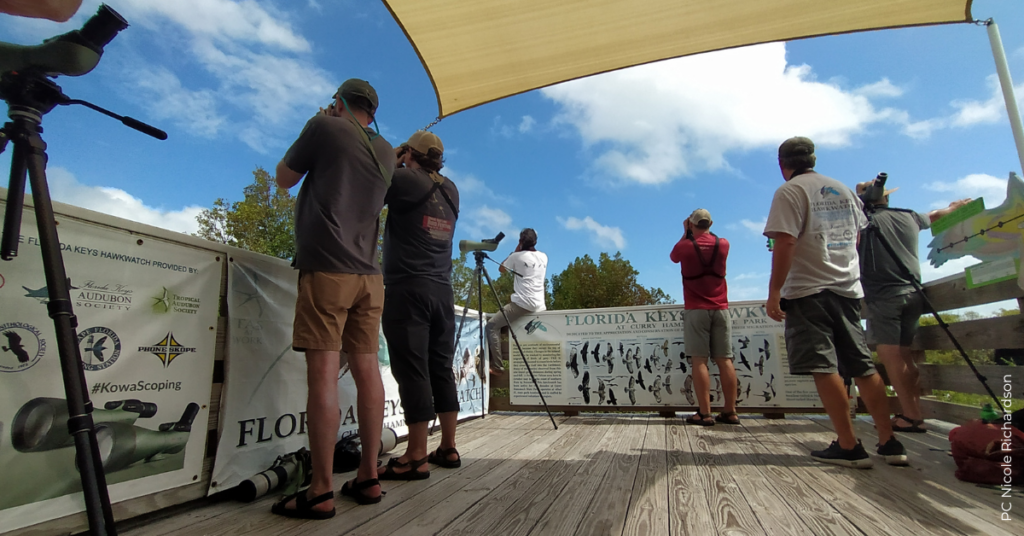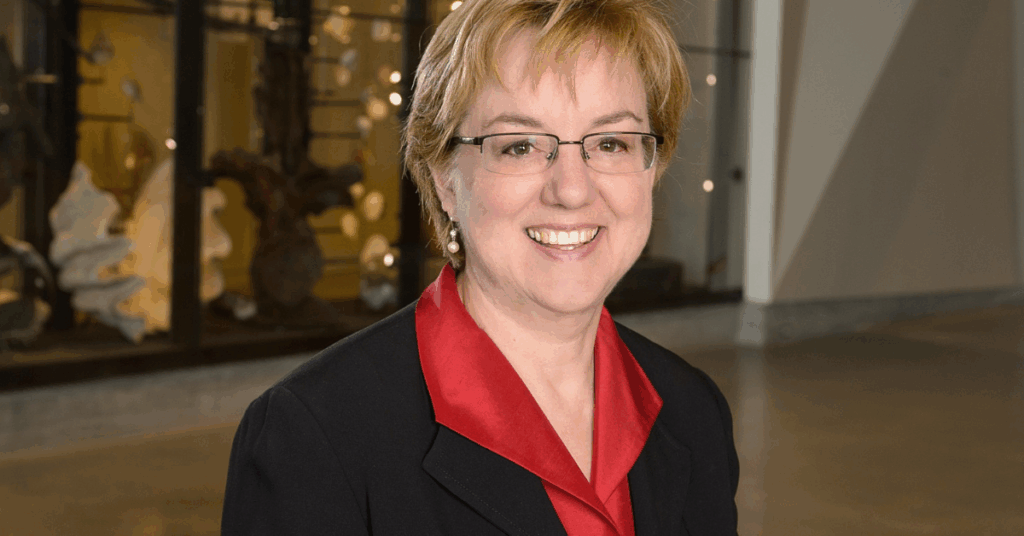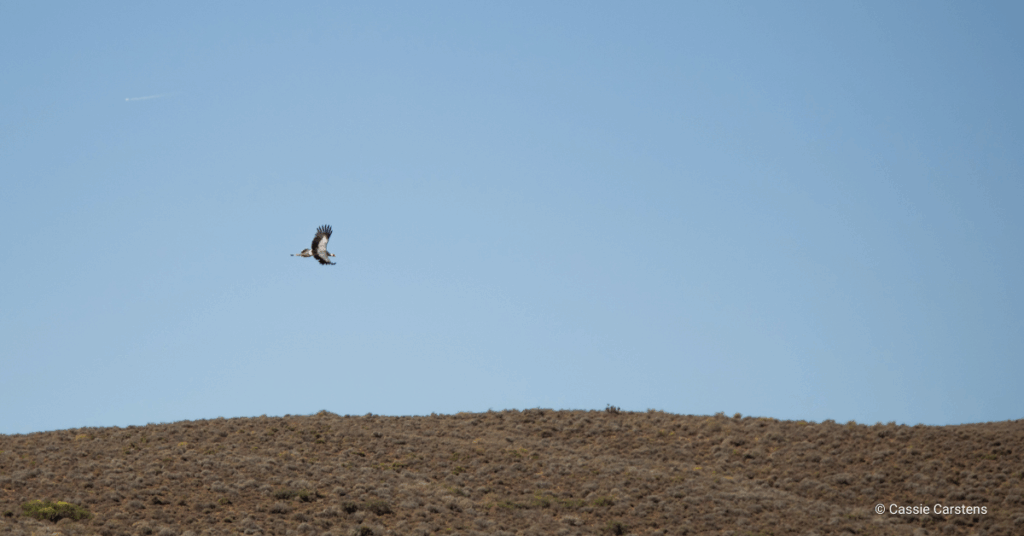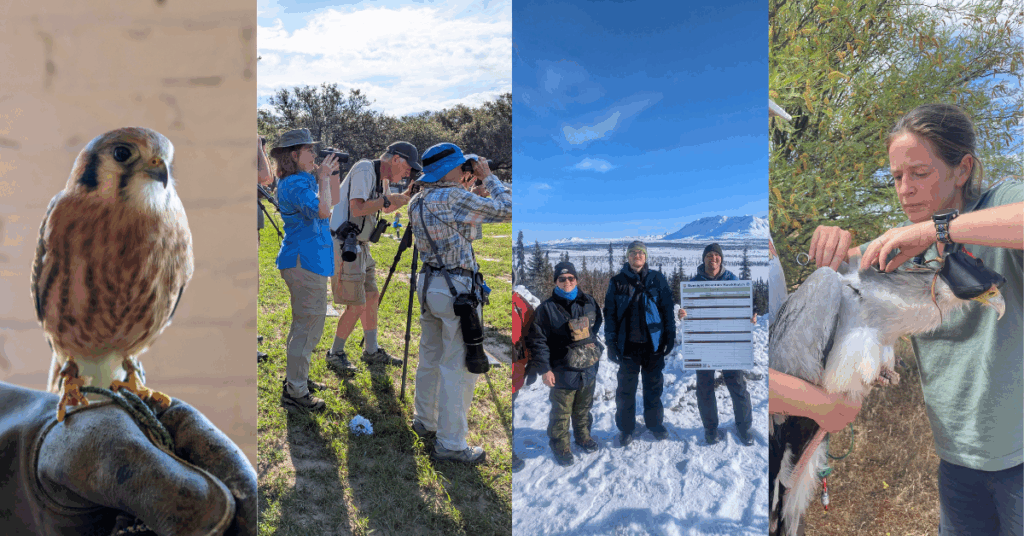After two years of virtual conferences, members of the HWI staff were thrilled to join their colleagues in the very warm Fort Lauderdale for the Raptor Research Foundation conference. In addition to reconnecting with and learning from colleagues, three members of the HawkWatch International team—Jessica Taylor, Jesse Watson, and Nicole Richardson—shared new findings on our research and trained newer raptor biologists during an advanced workshop.
First up, Nicole shared some preliminary results from a study she is working on with Jesse, Neil Paprocki (former HWI staff) at the University of Idaho, Bryce Robinson at the Cornell Lab of Ornithology, and Nick Alioto from Michigan State University on patterns of asymmetric molt in Red-tailed Hawk, Rough-legged Hawk, and Swainson’s Hawk. Molt has typically been thought to occur symmetrically; in other words, when a feather is lost on one wing, the same feather on the other wing is also lost at the same time. This is often observed not to be the case, however, so the team is seeking answers and aiming to figure out why and characterize and describe these observations in greater detail. These early results show that asymmetry is significantly more common in older birds, as well as some possible reasons why. Nicole suggests that this should be considered by fellow raptor biologists when assessing the age of a bird.
Nicole and Jesse teamed up with Bryce again, as well as Caitlin Davis from Boise State University and Andy Kratter from the University of Florida’s Museum of Natural History, to lead the Advanced Molt and Aging in Raptors workshop. The first of its kind to explore aging techniques in such depth, the workshop started with a lecture-style walkthrough on how birds molt, the importance of molt, and why and how raptors molt the way they do to produce the patterns of new and worn feathers we use to assess their age. Then, thanks to a most spectacular contribution from Andy and the museum of a beautiful set of study skins and spread wings, the participants had the opportunity to walk around the room for a closer look at real feathers and plumage of a whole variety of species, age classes, and patterns of molt. A small group size provided everyone with ample opportunities for questions, lots of conversation, and overall, everyone had fun and learned a lot!
HawkWatch gave two more talks, both focusing on American Kestrels. Jesse shared a summary of a soon-to-be-published paper, coauthored by Dr. Dave Oleyar, on the occurrence of ‘spraddle leg’ in American Kestrel nestlings. This severely debilitating and often lethal condition is well-documented in captive birds, from parrots to poultry, but its occurrence in wild bird populations is poorly understood. We have encountered it in a handful of American Kestrel nestlings among the thousands we have banded in Utah, and in addition to thoroughly documenting these cases, Jesse and Dave suggest that while it is rare, there are some likely causes and simple solutions. Inadequate substrate lining in the bottom of nest boxes is a probable culprit, as a smooth surface allows a nestling’s legs to slip and slide during fragile stages of development. Jesse concluded by suggesting that a thick layer of heavy wood chips or mulch in the bottom of nest boxes is very important!

In one of the last and most exciting sessions, Jessica presented some of her findings so far from her Master’s research-based jointly at Boise State University with Dr. Julie Heath and here at HawkWatch with Dr. Dave Oleyar. Following an amazing and productive summer collecting data, deploying and retrieving both transmitters and nest cameras throughout the Greater Salt Lake region on our American Kestrel Studies, Jessica had a wealth of fascinating things to share. She talked all about territory sizes in different habitat types, differences, and similarities in space use between males and females throughout the breeding season, and she also had some fun stories about a few neat surprise discoveries. One bird she tracked regularly flew more than twelve miles across Utah Lake to forage, and some birds mysteriously flew multiple miles away from their nest each night to sleep!
When not watching talks, catching up with old friends, or making new ones, people were seizing the opportunity to meet and hatch ideas or going out exploring the area to see the intriguing local wildlife that was new for most. Jesse and Nicole joined colleagues from the Red-tailed Hawk Project for a meeting over lunch at a great local restaurant, and several people made it down to the Florida Keys Hawkwatch, a site HWI formally ran from 1999 to 2008 that is now volunteer-led, to see incredible numbers of migrating Peregrine Falcons cruising between frigatebirds in one of the most unique places in the country.
We’re so excited for the next Raptor Research Foundation conference next year in Albuquerque, New Mexico. Can’t wait!
This blog was written by Nicole Richardson, HWI’s Field Biologist.




